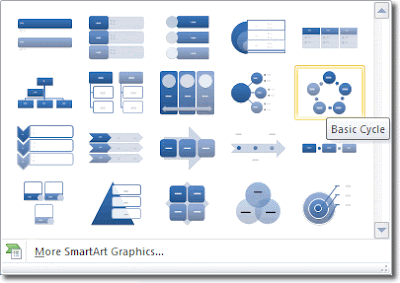PowerPoint presentations consist of a number of individual pages or "slides". The "slide" analogy is a reference to the slide projector. A better analogy would be the "foils" (or transparencies/plastic sheets) that are shown with an overhead projector, although they are in decline now. Slides may contain text, graphics, sound, movies, and other objects, which may be arranged freely. The presentation can be printed, displayed live on a computer, or navigated through at the command of the presenter. For larger audiences the computer display is often projected using a video projector. Slides can also form the basis of webcasts.
 | ||||
| Theme |
PowerPoint provides three types of movements:
- Entrance, emphasis, and exit of elements on a slide itself are controlled by what PowerPoint calls Custom Animations.
- Transitions, on the other hand, are movements between slides. These can be animated in a variety of ways.
- Custom animation can be used to create small story boards by animating pictures to enter, exit or move.
We can use transition to make our presentation more attractive.
Smart Art allows you to visually communicate information rather than simply using normal text.








0 comments:
Post a Comment